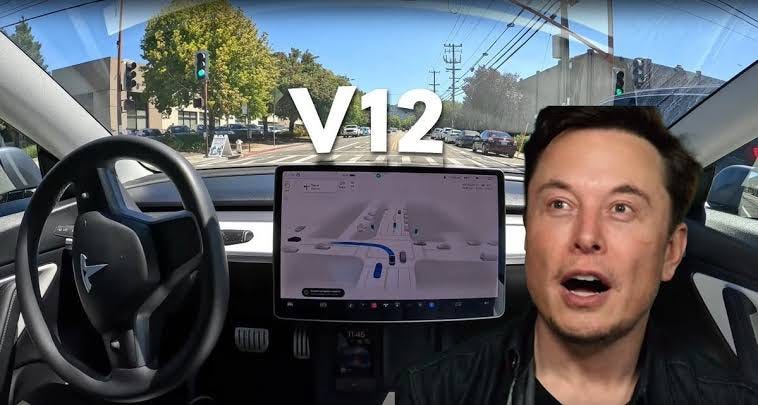2024 outlook for Tesla’s neural net FSD. Approval?
Possibly. I’m quietly optimistic.
The Tesla ‘Version 12’ AI neural network 8-camera-based full self driving system is looking insanely promising.
FSD Version 12 just got released to 1000s of Tesla staff to try out just after Christmas. Next to the general FSD beta testers of the world.
FSD version 12 failed in only one instance with a left-hand turn arrow a few months ago during an hour of live streaming of random navigation pin-drops around San Fransisco.

The point about version 12 is it’s almost 100% neural network from cameras to steering wheel and pedals. They removed 500,000 lines of manual hard-coding.
Training is video only now and requires no labelling of people, lanes, signs or vehicles. The neural network even learns to read signs.
Now to fix problems they just train it on additional video of good drivers in the problem situation.
Or, even better, just re-weight existing training.
Deep learning uncovers the ‘cause’ of data
As a deep learning engineer, I had been wondering why the FSD team hadn’t been trying neural net only.
I commented on this 2 or 3 years ago in YouTube FSD clips.
Although deep learning – like all machine learning – can’t distinguish between cause and effect, in practice the understanding of situations encountered in training is so extensive, the inferences made are likely largely causal, not just correlative.
After so much data, the most parsimonious explanation of data is usually it’s actual ‘cause’.
(I learned this while training neural nets to translate English into German. Just with pairs of sentences. No word alignment. It learns the rules of grammar.)
That means neural networks trained on such large datasets generalize to new situations really well.
There’s almost always training scenarios to help it make a safe decision.
The system is unlikely to drive the car onto the wrong side of the road even if a UFO were to land in front of it.
Regulatory approval?
So I predict Tesla FSD to be approved in some limited jurisdiction in late 2024 or early 2025 with verified oversight initially, as with today’s FSD beta, but with full autonomy from kerb to kerb.
They’ll need to add kerbside, driveway and parking bay arrival and some sort of way to interact with authorities / parking attendants.
Then during 2025 a final ‘no hands’ policy with full robotaxi / sleeping in the back seat approval by 2026.
So it’s got a way to go.
But looking exciting.
Especially through freight cost reduction, FSD could up global GDP by 25–50%. This will be transformative. And reduce the number of vehicles and parking bays required.
Not to mention the lives saved and convenience for everyone with FSD robotaxis and robo-minibuses.
Half price ride hailing is likely.
